Jubilee Waxcap
A rare and beautiful mushroom that should only be admired and photographed, never picked. It is a slimy, lilac/pink waxcap so easily identified and left in the field. I’m not sure of the edibility of this mushroom and as it is rare I have placed it in the inedible section.
| Mushroom Type | |
| Common Names | Jubilee Waxcap |
| Scientific Name | Hygrocybe / Gliophorus reginae |
| Synonyms | Hygrocybe sciophanoides var. carneoviolacea |
| Season Start | Aug |
| Season End | Dec |
| Average Mushroom height (CM) | 1.5-7 |
| Average Cap width (CM) | 2-6 |
Cap
2-6 cm. Pink/lilac to a violet/purple the cap is slimy and starts convex but will flatten out retaining an umbo.
Gills
Pink/pale grey and widely spaced with transverse ‘gills’ running between the main gills often visible. The gills are broadly attached to the stem (adnate) to being notched before joining the stem (sinuate). Unlike the rest of the mushroom, the gills are not slimy.
Possible Confusion
The Pink Waxcap (Porpolomopsis calyptriformis), pictured, but this is a paler more delicate pink, the cap is more conical and it is a greasy feeling mushroom, not slimy like the Jubilee Waxcap.
Spore Print
White.
Frequency
Rare.
Other Facts
A rare mushroom that should not be picked but reported to the Lost and Found Fungi project at the Royal Botanic Gardens of Kew.
http://fungi.myspecies.info/content/lost-and-found-fungi-project?fbclid=IwAR2HBXTGDYzFICJgonCbaB1GfraUEIxU68Vfk14x14FwgvX6tbH4ypIfJg4
Waxcaps don’t like to be disturbed or sprayed so will be found where fields and woodland have been left alone.
It is now thought that waxcaps grow in association with mosses, before it was thought that waxcaps were saprophytic living on decaying organic matter.


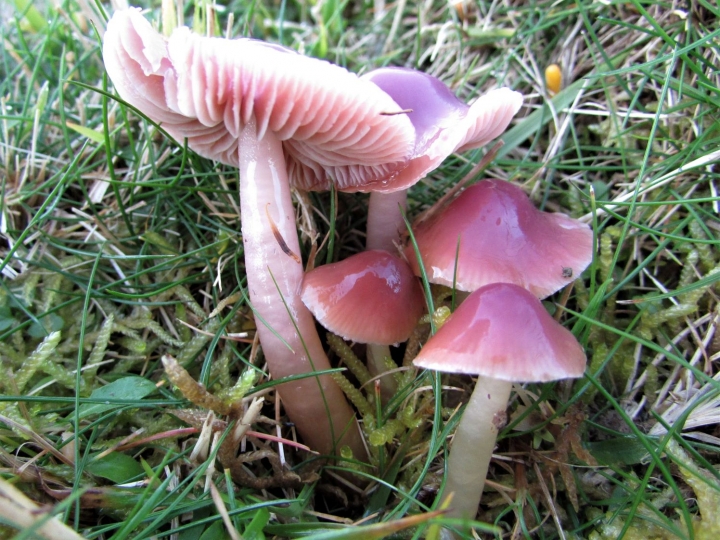

















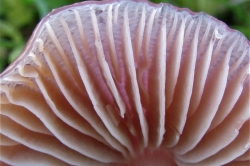
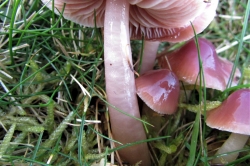
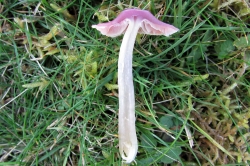
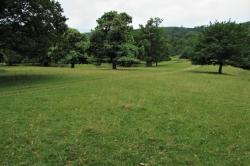
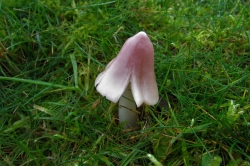





COMMENTS